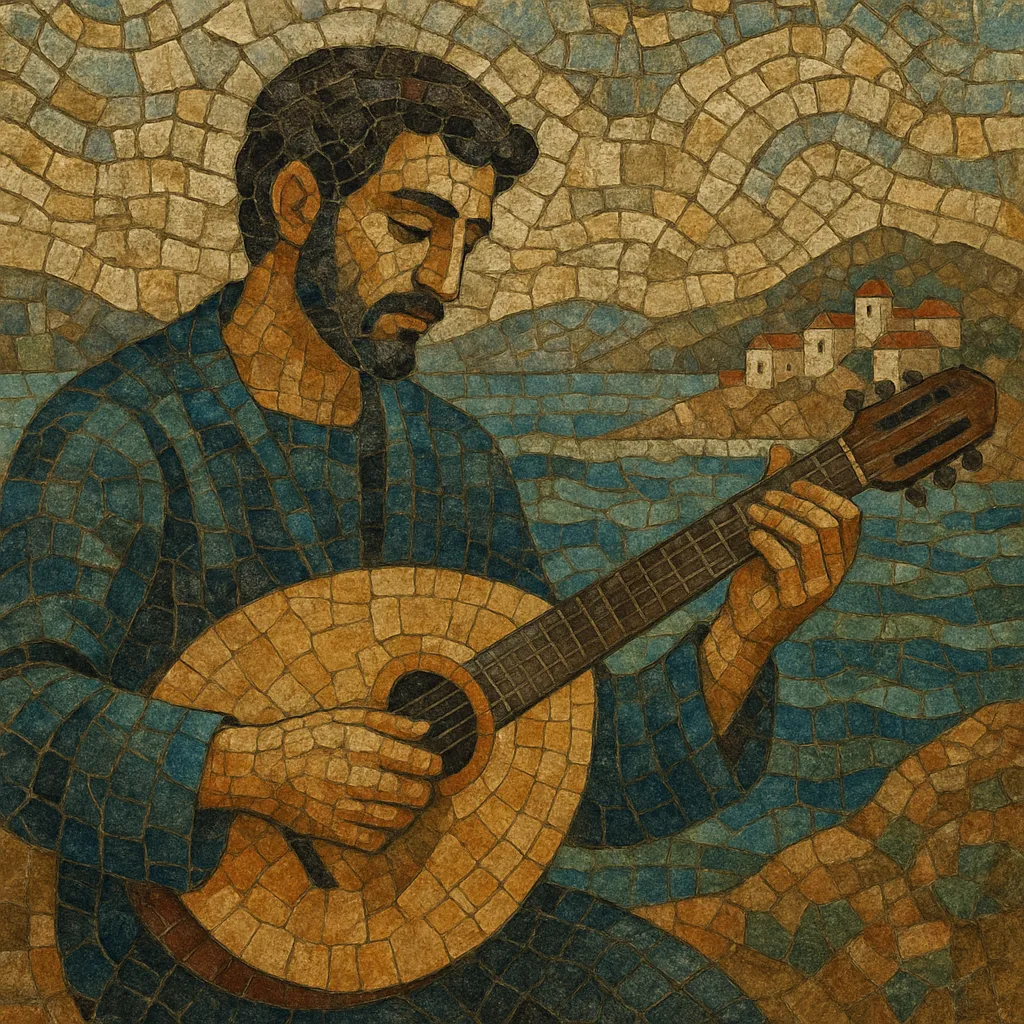Éntekhno (often rendered as entechno or entechno laïko) is a Greek art-song movement that merges the melodic language and rhythms of Greek folk and urban popular music with the orchestral palette and formal ambition of Western classical music.
Characterized by carefully crafted compositions, poetry-centered lyrics, and sophisticated arrangements, éntekhno places the composer and lyricist at the artistic core. It commonly sets major Greek poetry to music, uses modal melodies drawn from demotic (folk) and rebetiko traditions, and employs odd meters such as 9/8 (zeibekiko), 7/8, and 2/4 (hasapiko) alongside Western harmonic writing. The result is popular song with elevated aesthetic aims—intimate yet symphonic, rooted in Greek tradition yet cosmopolitan in sound.
Éntekhno emerged in Greece when composers sought to dignify popular song by fusing Greek folk and urban idioms with classical orchestrations and literary texts. Manos Hatzidakis’s advocacy for rebetiko as art and his early song cycles, along with Mikis Theodorakis’s large-scale settings of modern Greek poetry (notably Ritsos, Elytis, and Seferis), laid the foundation. Landmark recordings such as Theodorakis’s Epitaphios (1960)—issued both with bouzouki-led popular instrumentation and in symphonic versions—symbolized the new synthesis.
Through the 1960s, composers including Stavros Xarchakos, Giannis (Yannis) Markopoulos, Dimos Moutsis, and Manos Loïzos expanded the idiom. Their works formalized a composer–lyricist–interpreter model, where albums were conceived thematically, poetry was central, and orchestrations blended bouzouki, guitars, and folk percussion with strings, winds, and sometimes chorus.
During the military dictatorship, éntekhno became a vehicle for cultural identity and democratic aspirations. Theodorakis’s music was banned domestically yet flourished in exile, and interpreters such as Maria Farantouri gave the repertoire international presence. The genre’s poetic gravitas and symbolic resistance cemented its stature in Greek public life.
After the restoration of democracy, éntekhno assumed a central place in Greek music. Composers like Thanos Mikroutsikos and Nikos Xydakis introduced fresh harmonic colors, theatrical elements, and subtle jazz/classical inflections. Major vocalists—Haris Alexiou, George Dalaras, Dimitra Galani, and others—bridged éntekhno with laïko and global influences, helping the style reach broad audiences.
Éntekhno continues as a living tradition. Artists such as Sokratis Malamas, Thanasis Papakonstantinou, Alkinoos Ioannidis, and younger composer–singer figures integrate folk, rock, and world textures while preserving the genre’s hallmarks: poetic lyrics, modal melody, and nuanced orchestration. Concert halls, festivals, and recordings keep the repertoire in active circulation, ensuring its ongoing evolution.
Aim for poetry-driven song cycles or thematically unified albums where music serves the text. Prefer strophic or through-composed forms with developmental intros, interludes, and codas that elevate the narrative.


